The History & Allure Of Japanese Blacksmith Towns

Jump to:
When it comes to legacies of toolmaking excellence, Japan is in the upper echelon.
The Japanese reputation for exceptional tools isn't just about manufacturing prowess; it is steeped in centuries of skilled blacksmithing.
Across the island nation of Japan, specific towns and regions became known for their unique craftsmanship and the high-quality tools they have produced. The availability of certain natural resources like iron sand and forests for charcoal, along with the adaptability of skilled metalworkers, helped forge these blacksmithing hubs.
For those who appreciate the precision, durability and functional beauty of Japanese tools, understanding the origin story of these tools can deepen that connection. In this guide, we'll delve into some of the most renowned Japanese blacksmithing towns. Here we will explore the history of the Japanese tool craft, the distinctive tools they're known for and the factors that allowed these hubs of craftsmanship to thrive.
Legacy Forged in Fire: A History Of Japanese Blacksmithing
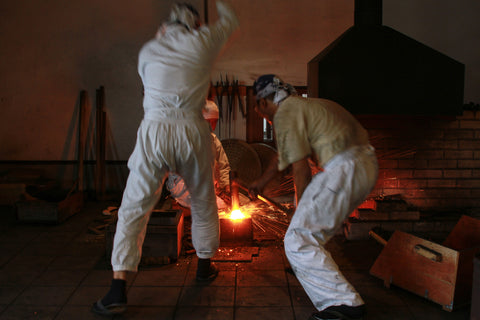
Japanese blacksmithing stretches back millennia, with evidence of iron tools and weapons dating back to the Yayoi period some two thousand years ago.
Later, during the tumultuous era of warring states (1467-1603), blacksmithing in Japan really came into its own. The demand for high-quality swords for the samurai class fueled innovation and refinement in metalworking techniques. Japanese blacksmiths such as the legendary Muramasa and Masamune honed their craft, forging swords renowned for their sharpness, durability and exquisite beauty.
This period also saw a rise in specialized blacksmithing towns. Skilled artisans settled in areas rich in natural resources – iron sand along coastlines and rivers provided the raw material, while abundant forests supplied wood to fuel the forges. Additionally, access to water sources was crucial for powering bellows and quenching blades. These factors, combined with the knowledge and skill sets honed during the samurai era, allowed certain towns and cities to develop unique forging methods and specialize in specific tools.
As Japan transitioned into a more peaceful era, the samurai class abated, but the Japanese blacksmithing tradition did not. Skilled artisans adapted their techniques, turning their talents to crafting high-quality tools for everyday use. The reputation for excellence established during the sword-making era carried over, and these towns became centers for producing agricultural tools, kitchen knives, woodworking implements and more.
Japan’s blacksmithing towns and cities are scattered throughout the archipelago, with some of the most famous located on the islands of Honshu, Shikoku and Kyushu. Blacksmithing centers like Seki in Gifu Prefecture, known as the "City of Blades,” hold centuries-long reputations for knifemaking. Others, like the town of Miki in Hyogo Prefecture, diversified to produce a wide range of tools.
Miki, Hyogo – Home Of The Higonokami Knife
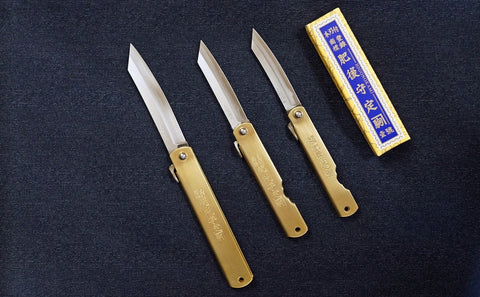
Located in Hyogo Prefecture just north of Kobe (and in the vibrant Kansai area that includes Osaka & Kyoto), Miki boasts a blacksmithing history stretching back to the 15th century.
Initially known for producing farming tools and nails, Miki's artisans shifted their focus to pocket knives in the late 19th century – inspired by Western designs. The result was the Higonokami, a simple yet ingenious folding knife characterized by its friction-held blade and distinctive lever. The name “Higonokami” roughly translates to "Lord of Higo.”
Miki's evolution into a modern toolmaking center hasn't diminished the significance of the Higonokami knife. It remains an iconic symbol of the town's heritage, still handcrafted by some workshops alongside modern interpretations and a broader array of knives and tools. Miki's blades are known for their sharpness and durability, and they often inherit the simple charm of the traditional Higonokami design. Today, the town holds an annual festival celebrating its knifemaking legacy, attracting enthusiasts from all over the world.
Ikeuchi
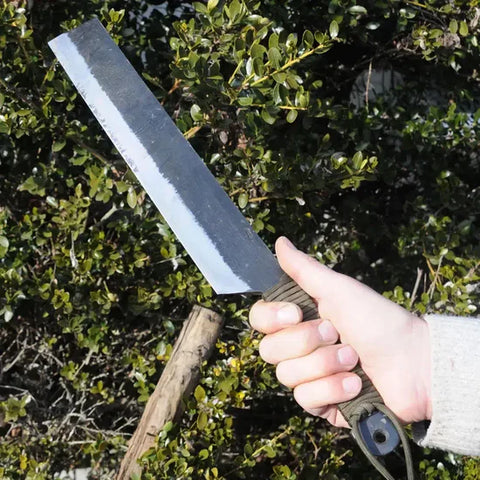
Ikeuchi produces a wide array of high-quality knives, drawing on centuries of experience in the field. Their products are a favorite among professionals and enthusiasts alike.
Ikeuchi is produced in Miki, Hyogo.
Hirosaki, Aomori – Tools Built For Endurance

Nestled in the northernmost prefecture (Aomori) of Japan's main island (Honshu), Hirosaki is a city with a rugged reputation.
Harsh winters and demanding agricultural work shaped the tools forged in this region. Blacksmiths in Hirosaki developed unique forging techniques, prioritizing strength and longevity above all else. Their tools are thicker, heavier and built to withstand rugged use in challenging environments.
Hirosaki is particularly known for its agricultural and gardening tools – hoes, hatchets, pruning shears and the like. These classic Japanese tools embody functional design, with an emphasis on raw power and resilience.
If your tasks demand sheer strength and the confidence that your tools won't fail, exploring the offerings from Hirosaki's workshops and forges is highly recommended.
Tsubame-Sanjo, Niigata – A Major Center Of Japanese Blacksmithing
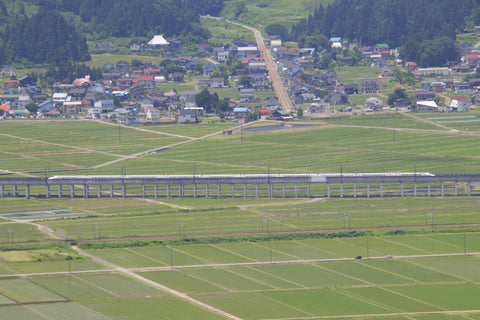
Situated side by side in Niigata Prefecture, the cities of Tsubame and Sanjo form a powerhouse of Japanese tool and metalware production.
Tsubame's metalworking heritage dates back to the Edo period (1603-1868), initially focusing on the production of nails and copperware.
Meanwhile, Sanjo was home to skilled blacksmiths crafting farm tools and kitchen knives.
In the 20th century, a unique synergy developed between these cities. They merged their skill sets, becoming a center for precision manufacturing.
The region also produces a vast array of tools, from woodworking chisels and pruning shears to specialized industrial and medical implements. Japanese blacksmithing tradition and dedication to quality makes Tsubame-Sanjo a major player in the global market for high-performance Japanese tools.
Tonkachi

Tsubame-Sanjo is home to world-renowned brands like Tonkachi, known for their expertly crafted demolition tools such as hammers, mallets, axes, crowbars, pry bars and more. Their tools are prized by carpenters and woodworkers who appreciate fine precision and timeless design.
Kanenori
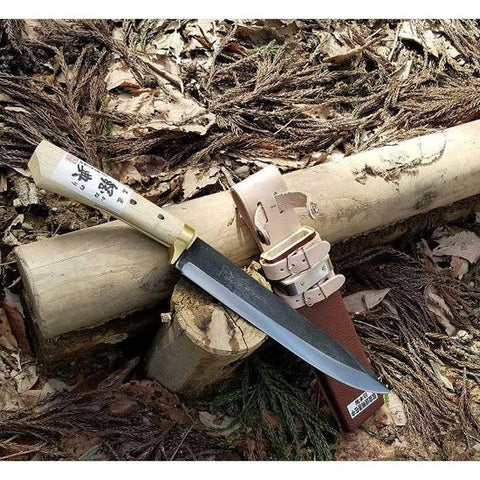
Known for its handcrafted axes, hatchets, hedge clippers and more, Kanenori carries on a family tradition dating back centuries. Their blades are prized for their sharpness and durability.
Suizan

Specializing in Japanese-style pull saws, Suizan produces blades known for their thin kerfs (amount of material removed by the blade), smooth cutting action and replaceable blades for long-term use.
Toyama, Toyama Prefecture – Where Iron And Artistry Meet

Toyama Prefecture, located on the western coast of Japan's main island, has a history deeply rooted in iron.
Blessed with iron sand deposits, the eponymous capital city of Toyama has been a center of metal casting and forging for centuries. This tradition gave rise to skilled artisans whose techniques yielded not only practical tools but also intricate decorative metalwork.
Today, Toyama Prefecture and its blacksmiths continue to embrace both the utilitarian and the artistic. Skilled craftspeople produce a range of high-quality tools, including exceptional woodworking implements and specialized blades for crafts like paper cutting.
Several notable brands, such as Toyama Hamono, call the region home, continuing a legacy of excellence in their chosen field. Toyama's understanding of iron extends beyond tools. The city is also known for its cast iron cookware and artistic metal sculptures.
Echizen, Fukui – Home Of Takefu Blades

Nestled in the heart of Fukui Prefecture, the city of Echizen (formerly known as Takefu) is a name synonymous with Japanese knife-making excellence.
The region has a blade-smithing tradition stretching back over 700 years, fostered by access to high-quality iron and water resources.
The Echizen Nata is a popular axe that is ideal for log splitting and carries well due to its lighter weight.
Seki, Gifu – The Knife Capital Of Japan
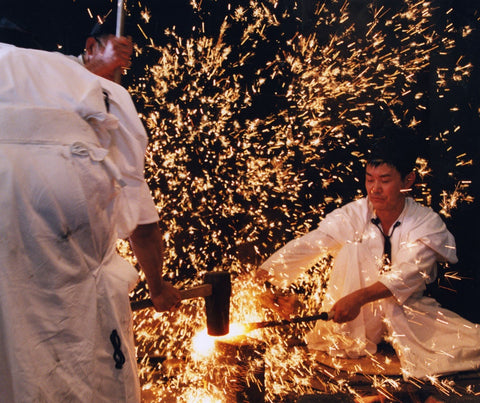
Located in Gifu Prefecture, Seki enjoys a reputation as one of Japan's most renowned centers of knife production.
Its history in blade-making dates back to the 13th century, fueled by the same factors that shaped other Japanese blacksmithing regions: skilled artisans and access to quality resources. Seki's focus on knives intensified in the Meiji era (1868-1912) as demand for traditional swords waned and artisans adapted their skills to modern needs.
Today, Seki is a powerhouse of knife manufacturing, producing a vast array of styles for both the domestic and global markets. Renowned brands like G. Sakai hail from the Seki region, alongside countless smaller workshops and individual blacksmiths. Whether you're looking for a classic Japanese kitchen knife, a specialized outdoor blade or a precision tool, Seki's offerings are sure to impress.
Tosa, Kochi – Forged In Tradition On Shikoku Island
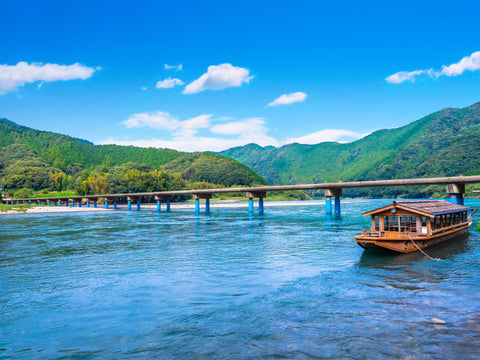
Located on the island of Shikoku, the Tosa region in Kochi Prefecture has a deep-rooted blacksmithing tradition focused on the production of hand-forged tools. Tosa is known for its skilled artisans who still employ traditional forging methods, breathing a unique character and spirit into each tool they create.
The region specializes in agricultural implements, gardening tools and knives, designed with durability and functionality as their focus. Tosa artisans often use thicker steel, sometimes hand-laminated, to create blades that withstand hard use without chipping or deforming. Their tools are built to be passed down through generations, prized by those who appreciate the rustic beauty and functional strength.
Saga City, Saga – A Focus On Unique Techniques
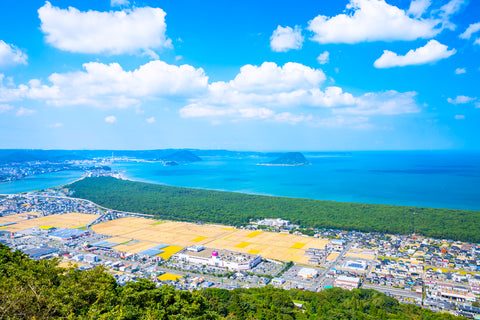
Saga City, located in the Saga Prefecture on the island of Kyushu, holds a unique place within the Japanese blacksmithing heritage.
While perhaps less widely known than some other towns, Saga is home to skilled artisans who carry on traditions and employ distinctive methods. They specialize in crafting a variety of implements, including agricultural tools, woodworking tools and knives.
The Japanese Blacksmithing Story Lives On
From the mountains of Hirosaki to the workshops of Tsubame-Sanjo, Japanese blacksmithing towns have shaped a legacy of quality and craftsmanship.
Each region has its own history, specialized techniques and signature products. Whether you own a razor-sharp kitchen knife from Sakai, a hand-forged woodworking chisel from Tosa or a pair of versatile gardening shears from Miki, you not only acquire exceptional implements but also become a part of the ongoing story of Japanese craftsmanship.

0 comments